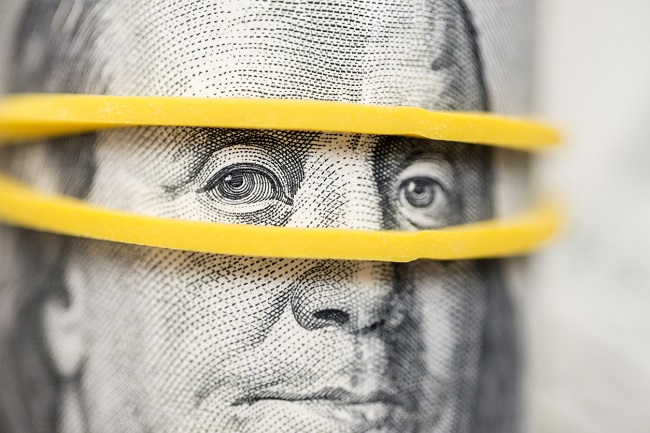
by Scott Ronalds
The Globe and Mail has been running a series of articles on TFSAs, including a feature called TFSA Trouncers, where they profile investors who’ve accomplished “incredible feats” with their accounts.
Rob Carrick highlighted a few numbers (obtained from Canada Revenue Agency) in a recent article that might make you envious. Two figures stuck out:
- Twenty-nine investors have TFSAs worth $5 million or more.
- Over 300 investors have TFSAs with a value between $1-5 million.
Rob rightly points out, though, that you shouldn’t feel bad if your TFSA isn’t in the same league. To put the above numbers in perspective, there are over 17 million TFSA holders in Canada and 95% of accounts have a value under $100,000. Only 5% are between $100,000 and $200,000, and just 0.2% exceed $200,000. Further, those million-dollar TFSAs are likely the result of high-risk strategies not suitable for most investors.
Underutilization of TFSAs
One of my observations over the past 15 years about these accounts (they were established in 2009) is that many people aren’t fully utilizing their potential. The above numbers suggest the same. Many Canadians who have the means to contribute to TFSAs are using them as spending accounts or savings vehicles (holding low interest-bearing products) rather than investing vehicles, even when they have long-term goals in mind.
The name is partly to blame for this. They shouldn’t be called Tax-Free Savings Accounts, but rather Tax-Free Investing Accounts. Additionally, many people are either unaware that they exist or don’t understand how they work. Hopefully the Globe series will help change this.
What a fully funded TFSA looks like
In a follow-up piece, Carrick highlighted some numbers to illustrate what a TFSA might look like if you opened an account when they were first established, contributed the maximum allowable amount at the beginning of each year, and pursued either a balanced or growth approach.
- If you made 6% (after fees, compounded annually), you would have approx. $158,000 by the end of 2024.
- If you made 7%, you would have $173,000.
- If you made 8%, you would have $189,000.
- If you made 9%, you would have $207,000.
In contrast, if you only held low-risk savings products in your account, such as a money market fund, you would have made around 1-2% per year, and your account would be worth roughly $110,000 (based on a 1.3% compound return, which is what the Morningstar Overnight Cash Index returned over the period). The difference between using a TFSA for saving versus investing is significant.
Your return will depend, of course, on your investment strategy and ability to contribute each year. The point of highlighting these numbers is to emphasize just how powerful a tool these accounts have become. If you and a partner both have growth-oriented accounts and have maxed out your contributions every year, you could have over $350,000 tax-free.
The key benefit: tax-free
Let’s turn to those last two words. The key benefit of TFSAs is their tax-free status. I thought it would be interesting to share some numbers on this, using a real account at Steadyhand for illustration.
The account in question has a growth focus and is comprised of our four equity funds. The client has contributed the maximum annually ($95,000 in total), and the account’s current market value is approx. $185,000 (representing an annualized return since inception of 8%).
If they decide to sell today, the client will have saved almost $25,000 in taxes over their holding period, assuming they’re in the highest tax bracket* (we break this down in the footnote).
Make the most of your account
Diligently contributing to your TFSA can lead to substantial tax savings that will continue to grow over time. If you’re unsure whether you’re making the most of your account, don’t hesitate to reach out to us, we’re here to help.
*Over the past 15 years, the holder has received $32,850 in distributions (as a reminder, these are the realized capital gains, dividends and interest income that the funds distribute to unitholders every year), which have consisted primarily of capital gains and dividends. The holder would have paid around $9,000 in taxes if these distributions were not tax sheltered. At the time of sale, the capital gain would be roughly $57,000 (the distributions over the years are added to the investor’s cost base, which serves to reduce the eventual capital gain). The tax payable on this would be approx. $15,000.
Management fees and expenses all may be associated with mutual fund investments. Please read the prospectus before investing. Mutual funds are not guaranteed, their values change frequently and past performance may not be repeated. The indicated rates of return are the historical annual total returns including changes in unit value and reinvestment of all distributions and do not take into account sales, redemption, distribution or optional charges or income taxes payable by any securityholder that would have reduced returns.
We're not a bank.
Which means we don't have to communicate like one (phew!). Sign up for our Newsletter and Blog and join the thousands of other Canadians who appreciate the straight goods on investing.

